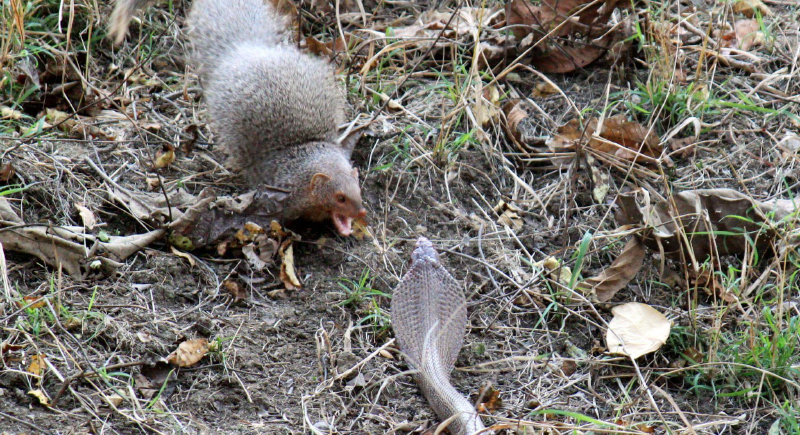This 10-Pound Animal Is a Snake’s Worst Nightmare
Snakes have always had the upper hand in the animal world. Their venom kills quickly, their strikes happen in milliseconds, and their reputation for stealth keeps several predators at bay. But one small predator doesn’t back down. It faces the beast head-on and wins with precision and instinct. Believe it or not, that animal is the mongoose.
The mongoose is a small, weasel-like mammal found in Africa and Asia, usually weighing no more than 10 pounds. Despite its size, it’s armed with sharp teeth, lightning-fast reflexes, and a natural resistance to snake venom. Living in colonies and feeding on everything from insects to small animals, this daring predator has become legendary for its willingness to take on snakes that most creatures would avoid at all costs.
Why Do Cobras Avoid Fighting Them?
When a cobra spots a mongoose, its first response is caution because they recognizes mongooses as high-risk opponents. Even the longest and most poisonous species, like the king cobra, often try to escape rather than engage. This avoidance comes from generations of conflict where snakes rarely win.
The cobra’s defensive display, which is raising its hood and hissing, is meant to intimidate. But mongooses don’t rely on intimidation. Instead, they depend on accuracy and fast decisions. When they charge, they aim for the back of the head and deliver a bite strong enough to crush bone.
Venom Resistance Gives Them a Survival Edge
The mongoose’s resistance to bites gives it an advantage, but the fight is never simple. King cobras don’t go down easily. After all, their venom is among the most toxic in the animal kingdom. During a close conflict, a cobra can still land a bite, and sometimes it does.
The toxin enters the mongoose’s body and causes muscle weakness, disorientation, and sometimes temporary paralysis. A bitten opponent may collapse and stop responding for several minutes, but it rarely stays down. Within a short span, it often regains full control and returns to the confrontation.
This is all because its nervous system works differently. A genetic mutation changes the structure of its acetylcholine receptors and makes it harder for the neurotoxins to bind and disrupt nerve signals.
However, the mongoose’s survival is not guaranteed in such a scenario. If the cobra bites repeatedly or delivers a large enough dose, the animal can still die. But in numerous one-on-one encounters, the snake doesn’t get enough chances to finish the job.
They Use Speed to Win Fights

Image via iStockphoto/EyeEm Mobile GmbH
While the cobra strikes with incredible speed, the mongoose reacts even faster. Its reflexes allow it to slip just out of reach, then reposition and launch its own attack. A well-timed bite to the head or neck ends the standoff before the snake can try again.
That kind of precision isn’t just natural ability. Young mongooses spend time watching older members of their colony face off against snakes. They see how experienced hunters move, when they commit to a blow, and what happens when timing fails. Those observations help prepare them for the same showdowns later on.
Other Snakes Fall to Them Too
The mongoose doesn’t limit its encounters to cobras. It has also been seen killing rattlesnakes, vipers, and black mambas. The method stays consistent: dodge, get close, and aim for the skull. Wildlife experts estimate mongooses win about 75 to 80% of these encounters.
Birds of prey, like hawks and eagles, also hunt snakes. However, the mongoose uses a ground-level strategy based on direct attack and close-quarters speed. Its style of hunting is aggressive, deliberate, and built for efficiency.
In any head-to-head contest, there aren’t many animals that match their record against venomous snakes.